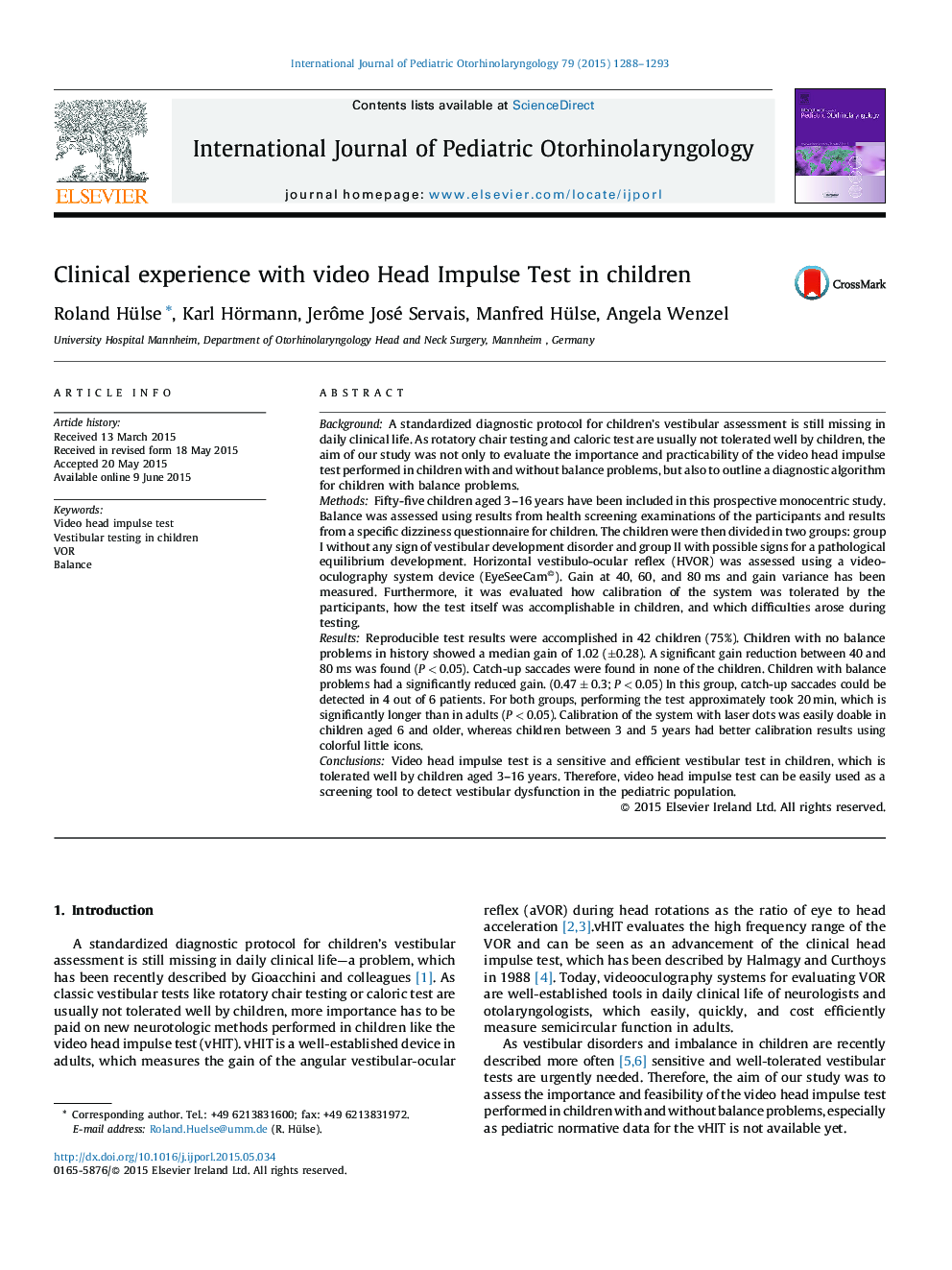| کد مقاله | کد نشریه | سال انتشار | مقاله انگلیسی | نسخه تمام متن |
|---|---|---|---|---|
| 4111666 | 1605993 | 2015 | 6 صفحه PDF | دانلود رایگان |
BackgroundA standardized diagnostic protocol for children's vestibular assessment is still missing in daily clinical life. As rotatory chair testing and caloric test are usually not tolerated well by children, the aim of our study was not only to evaluate the importance and practicability of the video head impulse test performed in children with and without balance problems, but also to outline a diagnostic algorithm for children with balance problems.MethodsFifty-five children aged 3–16 years have been included in this prospective monocentric study. Balance was assessed using results from health screening examinations of the participants and results from a specific dizziness questionnaire for children. The children were then divided in two groups: group I without any sign of vestibular development disorder and group II with possible signs for a pathological equilibrium development. Horizontal vestibulo-ocular reflex (HVOR) was assessed using a video-oculography system device (EyeSeeCam©). Gain at 40, 60, and 80 ms and gain variance has been measured. Furthermore, it was evaluated how calibration of the system was tolerated by the participants, how the test itself was accomplishable in children, and which difficulties arose during testing.ResultsReproducible test results were accomplished in 42 children (75%). Children with no balance problems in history showed a median gain of 1.02 (±0.28). A significant gain reduction between 40 and 80 ms was found (P < 0.05). Catch-up saccades were found in none of the children. Children with balance problems had a significantly reduced gain. (0.47 ± 0.3; P < 0.05) In this group, catch-up saccades could be detected in 4 out of 6 patients. For both groups, performing the test approximately took 20 min, which is significantly longer than in adults (P < 0.05). Calibration of the system with laser dots was easily doable in children aged 6 and older, whereas children between 3 and 5 years had better calibration results using colorful little icons.ConclusionsVideo head impulse test is a sensitive and efficient vestibular test in children, which is tolerated well by children aged 3–16 years. Therefore, video head impulse test can be easily used as a screening tool to detect vestibular dysfunction in the pediatric population.
Journal: International Journal of Pediatric Otorhinolaryngology - Volume 79, Issue 8, August 2015, Pages 1288–1293
